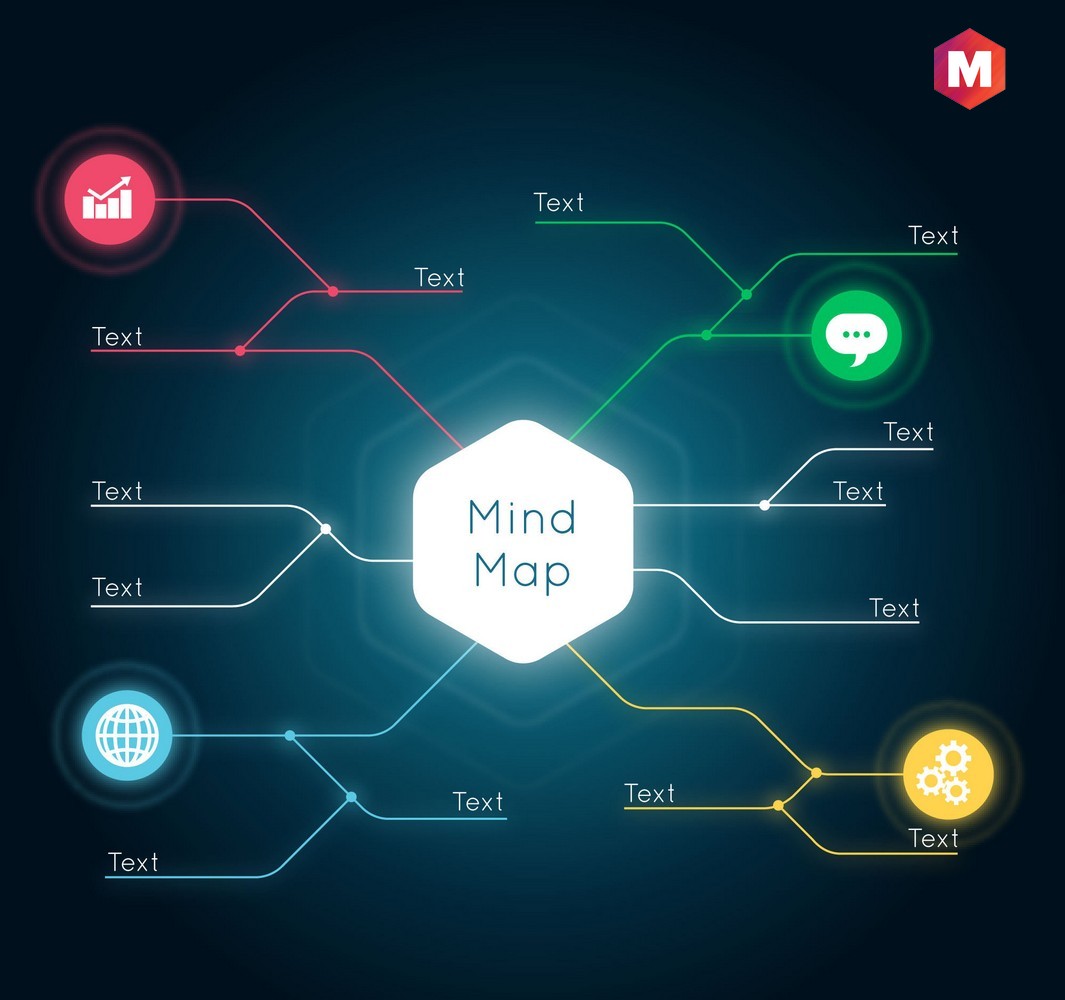Divergent thinking is a type of thinking that allows you to explore different ideas and come up with original solutions. This type of thinking is important in many fields, such as art, science, and business.
Divergent thinking is often used in problem-solving, as it can help you find new and innovative solutions. Several techniques can help you think divergently. One technique is to brainstorm with others. This can help you come up with more ideas than you would on your own. Another technique is to use a mind map. This can help you visually explore different ideas and see how they relate to each other.
Table of Contents
What is Divergent Thinking?
Definition: Divergent thinking is a problem-solving style that encourages individuals to come up with many different innovative viewpoints or solutions to an urgent issue. Divergent thinkers are frequently independent, inquisitive, and risk-taking. The notion of divergent thinking is a type of cognitive process or technique for generating innovative ideas through the exploration of numerous potential options.
It typically takes place in a random, free-flowing, “non-linear” manner such that many thoughts emerge in an emerging cognitive style. The possibilities are discussed in a short amount of time, and unexpected links are made. Following divergent thinking, ideas, and information are organized and structured using convergent thinking, which uses a specific set of logical procedures to reach one conclusion.
How divergent thinking works?
Divergent thinking is a thought process or creative thinking used to generate creative ideas by exploring many possible solutions. It is often used in combination with convergent thinking, which is a process used to find the single best solution to a problem. Divergent thinking is often used in creative problem-solving.
Divergent thinking is a cognitive and creative process that involves generating new ideas or solutions that are different from the existing ones. This type of thinking is usually used when we need to find a new way to solve a problem or when we need to come up with new ideas. Divergent thinking is often used in creative problem-solving.
There are three main steps in divergent thinking
1. Generating new ideas
This is the first step in divergent thinking. In this stage, we come up with as many new ideas or solutions as possible. There are no wrong answers at this stage, so we should just let our minds flow and come up with whatever comes to mind.
2. Evaluating the ideas
In this stage, we evaluate the ideas that we came up with in the first stage. We choose the best ones and discard the rest.
3. Converting the ideas into solutions
In this stage, we take the best ideas and convert them into solutions. This is where we need to be creative and come up with something that is different from what already exists.
A divergent thinker is often used to describe people who are creative and come up with original and unique ideas. Divergent thinkers are able to see things from different perspectives and think outside the box.
Difference Between Convergent and Divergent Thinking
Some of the differences between divergent and convergent thinking are
The main difference between convergent and divergent thinking is that convergent thinking involves narrowing down to one particular solution, whereas divergent thinking involves coming up with multiple solutions.
Divergent thinking is a type of flexible thinking that allows you to explore various ideas and come up with original solutions. On the other hand, convergent thinking is a type of rigid thinking that requires you to find a single correct answer.
Divergent thinkers are often more creative than convergent thinkers. This is because they are more open-minded and are willing to explore different possibilities. Divergent thinkers are also better at problem-solving, as they can consider a wider range of options. Convergent thinkers, on the other hand, may struggle with problems that have more than one correct answer.
How to Develop Divergent Thinking Skills?
Some of the techniques used to stimulate divergent thinking and develop your divergent thinking skills are
1. Practice brainstorming
Brainstorming is a great way to come up with new and innovative ideas. When you brainstorm, try to come up with as many ideas as possible, no matter how silly they may seem.
2. Take on new challenges
Challenging yourself with new tasks can help you develop your divergent thinking skills. When you are faced with a new challenge, take some time to brainstorm different ways to solve the problem.
3. Be open-minded
It is important to be open-minded when you are trying to develop your divergent thinking skills. This means that you should be willing to consider new ideas and perspectives.
4. Take some time to daydream
Daydreaming can help you come up with new and original ideas. When you daydream, let your mind wander and see where it takes you. You may be surprised at the ideas that you come up with.
5. Be curious
Curiosity can help you think divergently. When you are curious, you are more likely to explore different possibilities and ask questions.
Activities to Stimulate Divergent Thinking
1. Mind mapping
Mind mapping is a great way to visually explore different ideas and possibilities. When you mind map, you create a visual representation of your thoughts and ideas. This can help you see the connections between different ideas and come up with new solutions.
2. Lateral thinking puzzles
Lateral thinking puzzles are a great way to challenge your mind and come up with original solutions. These puzzles typically have more than one correct answer, which requires you to think divergently.
3. Word association
Word association is a great way to stimulate your mind and come up with new ideas. To do this, simply start with a word and then brainstorm other words that are associated with it. This can help you see the connections between different concepts and come up with new ideas.
4. Playfulness
Playfulness is a great way to stimulate your Divergent Thinking. When you approach tasks with a sense of playfulness, you are more likely to explore different possibilities and come up with original solutions.
Effects of positive and negative moods on Divergent Thinking
Research has shown that positive and negative moods can affect divergent thinking. Positive moods have been found to facilitate divergent thinking, as they tend to increase flexibility and openness.
Negative moods, on the other hand, have been found to impede divergent thinking, as they tend to reduce flexibility and openness. This is because negative moods tend to narrow our focus and make us less likely to explore different possibilities.
Effects of sleep deprivation on Divergent Thinking
Sleep deprivation has been found to have a negative effect on divergent thinking. This is because sleep deprivation tends to reduce flexibility and openness.
In one study, participants who were sleep-deprived were less likely to come up with creative solutions to problems. This is because sleep deprivation decreases our ability to think flexibly and explore different possibilities.
In another study, sleep-deprived participants were also found to be less likely to generate new ideas. This is because sleep deprivation decreases our ability to think divergently. Thus, it is clear that sleep deprivation hurts divergent thinking.
Convergent & Divergent thinking in project management
Project managers often have to use convergent thinking in order to come up with the best solution to a problem.
Convergent thinking is the ability to find a single, correct solution to a problem. This type of thinking is typically used when we are trying to find the best possible solution to a problem.
Divergent thinking, on the other hand, is used when we are trying to generate new and innovative ideas. While convergent thinking is often seen as the better option in project management, it is important to note that both types of thinking have their own advantages and disadvantages.
Advantages of Divergent Thinking
Some of the advantages of divergent thinking are
1. Boosts teamwork
Divergent thinking can help to boost teamwork as it encourages different team members to share their ideas and thoughts. This can help to create a more collaborative environment where everyone feels like they are contributing to the task at hand.
2. Best solution
Divergent thinking can also help to find the best possible solution to a problem. This is because it allows for different ideas to be explored and considered.
3. Higher flexibility
Divergent thinking can also lead to higher flexibility. This is because it allows for different options to be considered and explored. This can help to make the team more adaptable and able to deal with change.
4. Creative & innovative solutions
Divergent thinking can also lead to more creative and innovative solutions. This is because it allows for different ideas to be explored and considered. This can help to make the team more creative and innovative.
Disadvantages of Divergent Thinking
Some of the disadvantages of divergent thinking are
1. Not always the best option
Divergent thinking is not always the best option. This is because it can sometimes lead to less efficient and less effective solutions.
2. Can be time-consuming
Divergent thinking can also be time-consuming. This is because it requires different team members to share their ideas and thoughts. This can lead to long meetings and brainstorming sessions.
3. May lead to conflict
Divergent thinking can also sometimes lead to conflict. This is because different team members may have different ideas and thoughts. This can lead to disagreements and arguments.
How to increase Divergent Thinking
There are a few things that you can do in order to increase your divergent thinking
1. Get enough sleep
Sleep is important for Divergent Thinking. One study found that sleep deprivation can reduce our ability to think divergently.
2. Exercise
Exercise has been found to increase Divergent Thinking. This is because exercise increases blood flow to the brain, which helps to improve cognitive function.
3. Take breaks
Taking breaks can help to increase Divergent Thinking. This is because taking breaks allows us to take a step back from a problem and come up with a fresh perspective.
4. Be open-minded
Being open-minded is important for Divergent Thinking. This is because if you are not open-minded, you will be less likely to explore different possibilities.
5. Try new things
Trying new things can help to increase Divergent Thinking. This is because when you try new things, you are exposing yourself to new ideas and ways of thinking.
6. Take a Divergent Thinking course
There are many courses available that can help you learn how to increase Divergent Thinking. These courses can provide you with the tools and techniques that you need to think divergently.
Divergent Thinking vs. Lateral Thinking
Divergent thinking is often confused with lateral thinking. However, there is a big difference between the two.
Divergent thinking is about generating new ideas, while lateral thinking is about finding new ways to solve problems. Lateral thinking is typically used when we are stuck on a problem and need to find an alternate solution.
Divergent thinking is about coming up with new ideas, while lateral thinking is about solving problems in a different way.
Examples of Divergent Thinking
Some of the companies using divergent thinking are
1. Google
Google is known for its use of divergent thinking. The company encourages its employees to think outside the box and come up with new and innovative ideas.
2. Apple
Apple is another company that uses divergent thinking. The company encourages its employees to think differently and come up with new and innovative products.
3. Procter & Gamble
Procter & Gamble is another company that uses divergent thinking. The company encourages its employees to think differently and come up with new and innovative products.
Conclusion!
On the ending note, it is clear that divergent thinking is the way of thinking that allows for different ideas to be explored and considered. This can help to make the team more creative and innovative.
Divergent thinking has some advantages as well as disadvantages which are discussed in detail above. What are your thoughts on divergent thinking? Do you think it is a good way to think? Let us know in the comments below!
Liked this post? Check out the complete series on Careers


